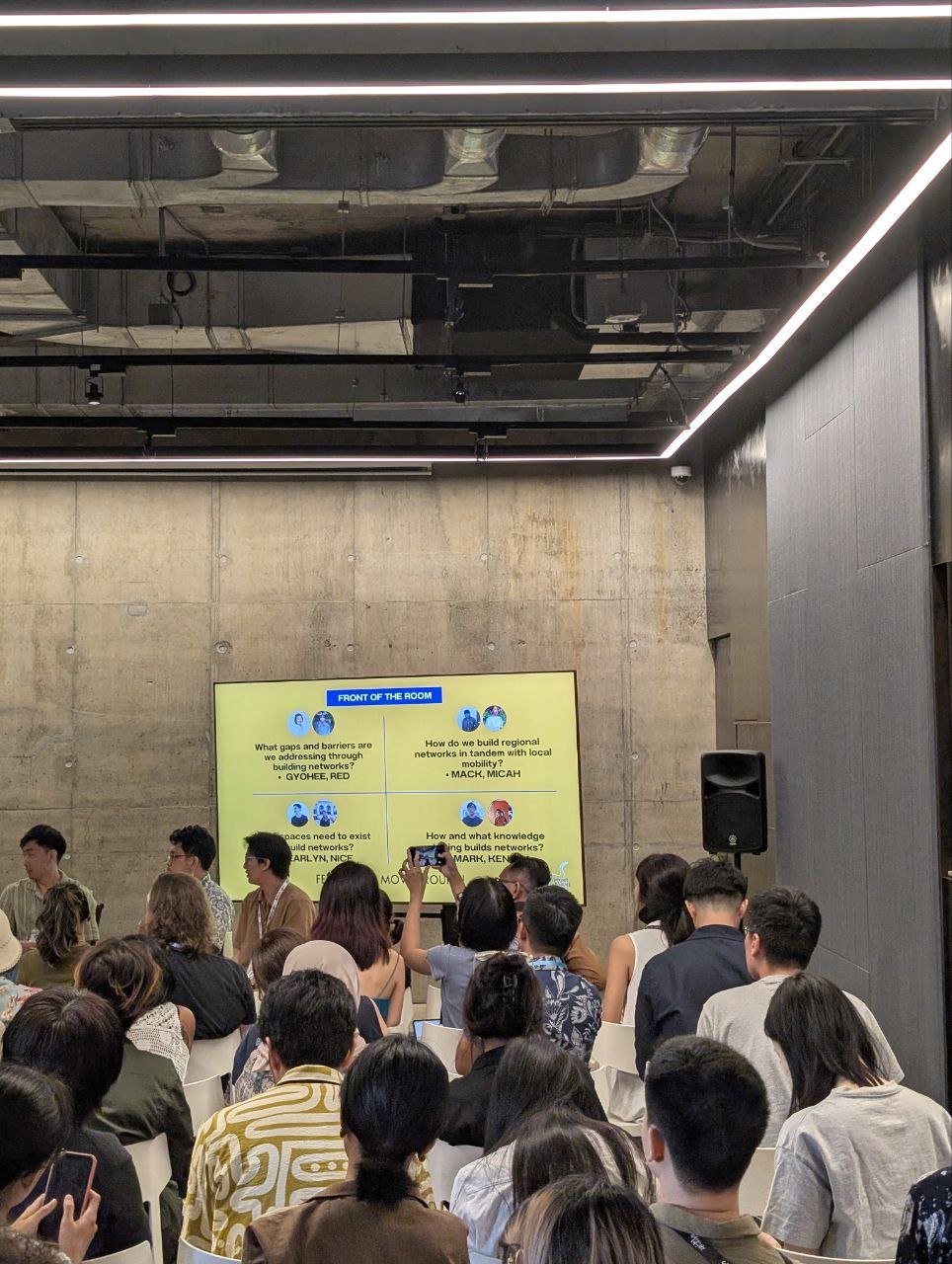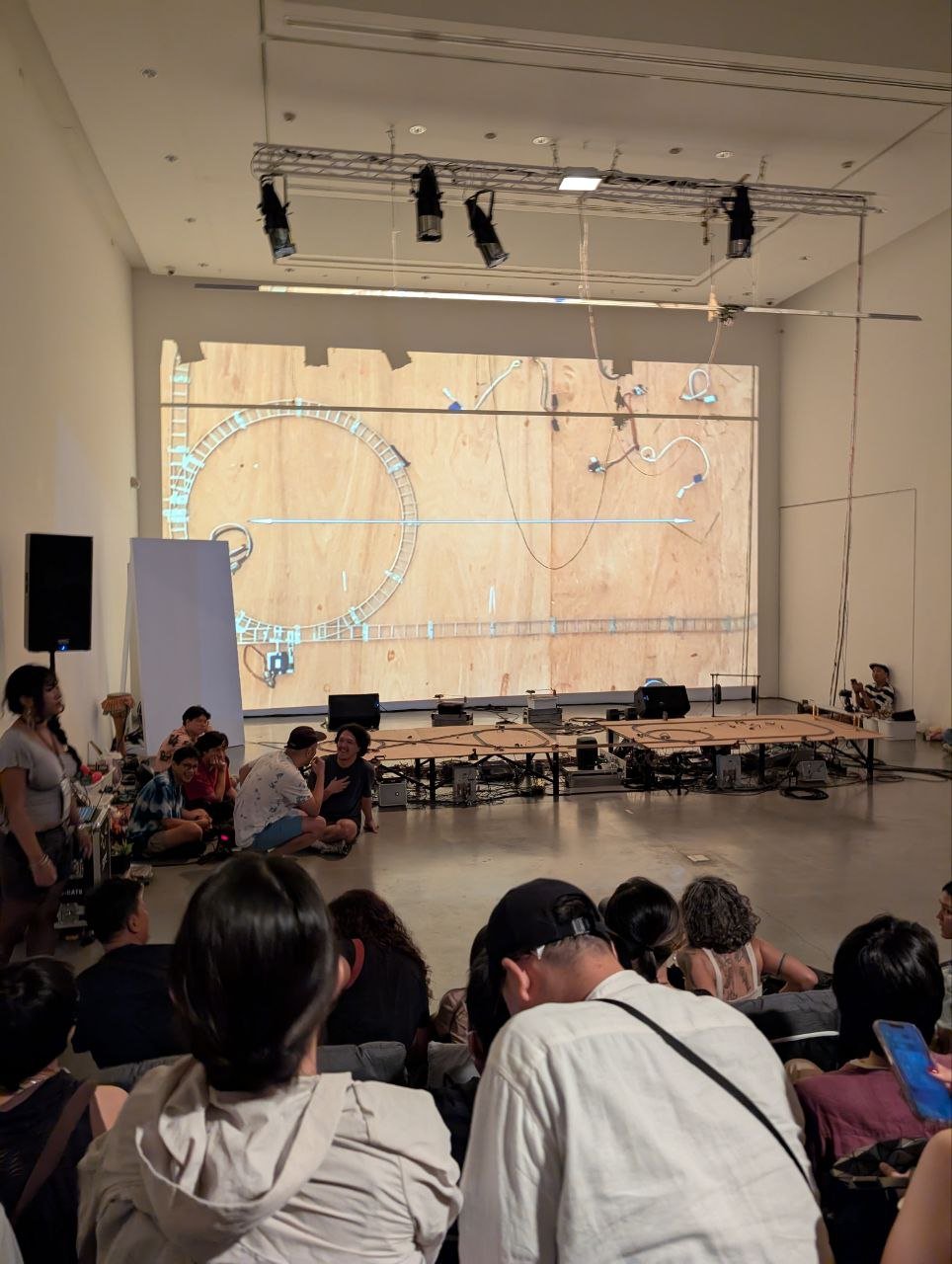Raw Musings on BIPAM
BIPAM
Raw Musings On BIPAM
During my 4 days at BIPAM, the phrase "to look forward, we must look back" kept repeating in my head. It became the final line of my personal sharing at the "Going Green (reality check)" panel about sustainability practices in producing and creating work. We didn't know it yet, but that panel set the tone for the rest of BIPAM as we explored post-colonial, post-capitalist models of producing art and performance, which are, in fact, pre-colonial, pre-capitalist practices sustained by regional SEA groups that have fallen under the radar of Western-centric knowledge sharing. Another major focus was networks and knowledge sharing practices, especially amongst producers. While I appreciated learning about the numerous networks and communities, I found them not immediately useful for my practice. The greatest benefit of attending BIPAM was meeting artists from around the region and understanding the common goals and provocations among independent or smaller group performance makers. The prevailing sentiment at BIPAM was a rejection of proscenium/black-box centric producing, stemming from ecological concerns, financial limitations, creative innovation, or practices derived from all three, such as Paper Moon Puppet Theatre Company's work. This exemplified the post/pre-colonial, post/pre-capitalist producing I mentioned earlier. In thinking about my own practice, I deeply resonate with this direction toward what the Australian theatre industry calls Expanded Theatre, theatre existing outside conventional spaces. Due to my personal biases and limited exposure to SEA artistic practices, I had failed to recognize that while expanded theatre may be a response to wasteful, inaccessible practices, it has long existed due to SEAsian artists' historical exclusion from these resources. This realization made me confront my privilege as a Singaporean artist working in an industry modeled after Western theatre.
This realization underscores the importance of strong cross-boundary professional networks. We need to look beyond our Singaporean industry to contribute to and learn from the regional industry. At the Bumantara panel on "Platforming the in-betweenness" by Djakarta International Theater Platform, I gained a new perspective on SEA as a region of in-betweenness, countries whose cultural bases derive from either Indochinese or Indian influence. We've always viewed Singapore as uniquely culturally in-between, often envying our neighbors' strong cultural identities and unbroken histories. But every SEA country is a product of cultural adoption; Singapore differs only in its more recent and pronounced embrace of colonialism. This shared in-betweenness unifies our region. While I'm still exploring how this identity might shape cross-boundary collaborations, it offers an intriguing foundation for connection. Our discussion about performance transference explored how works might exist in multiple cities and how collaboration, adaptation, and transfer across borders might evolve. By thinking more deeply about navigating cultural and language differences, finding common ground, and adapting for specific audiences, we could develop more artful and culturally informed processes beyond simple translations or touring. This approach might help us creatively address logistical and resource limitations, major hurdles for independent creators in cross-boundary collaborations.





Another exploration of this in-betweenness, beyond regional artist networks, examines "the stage as a relational site that responds to limitations." This expands beyond black boxes and proscenium stages to question what else could be a stage. The Djakarta International Theater Platform challenges artists to embrace their position as cultural adoptees while resisting typical Western performance conventions. They address logistical limitations through the concept of "logistical privilege," questioning who deserves access to traditional art spaces, who can afford them, and how we might democratize these scarce resources.
To look forward, we must look back, specifically to our own artistic traditions, our collective traditions, beyond our borders. As someone noted, "The moment they built a theatre, you lose 90% of the people that might watch theatre. People want to watch, but you can't always expect them to walk in."
That being said, we did visit three theatres to watch Tho Dia, Ridden, and Juggle and Hide.



Juggle and Hide was the most novel of the three. It began as a quasi-verbatim performance without performers. Instead, people placed items on two tables, captured by cameras providing an eagle's eye view, a side view, and one on a moving train circling the table. We watched these props being placed, either directly through live action or via video projections, while a recording of the artist's lecture on Bangkok's political dissent and art played. Props related to the lecture either directly through historical photos and memorabilia or indirectly as metaphors. This sustained the first hour, becoming tedious after a long day of talks. Just as I was about to dismiss it as overly conceptual, the play transformed. In act two, the props began "conversing" with the director through screens, inanimate objects seemingly coming alive. They made demands, including to stop being used as metaphors. We learned that every prop had appeared in the director's previous works and was now "revolting" against being "used." These props became actors through haphazard mechanization that mimicked live performance's ephemeral nature, no two shows identical as the props nearly fell apart, joints loosening, movements unpredictable, with no human intervention. The audience faced these revolting objects alone. It felt uncanny, my brain registered performances while knowing these were programmed objects. Not robots, but props revolting against their forced nature, and, ironically, becoming metaphors again for Bangkok's student and citizen protests against tyranny and corruption, reclaiming voices from oppressors who view them as political pawns. This powerfully represented activists' plight in a way that human performance couldn't match. It made us see these props as power views activists: first dismissing their "revolt" as ridiculous, then, as intensity grew, forcing us to consider their demands and question our treatment of them. Wichaya Artamat crafted a surreal, post-human experience that placed us in the oppressor's position. While theatre-goers and artists typically align with activists, Juggle and Hide pushed us to examine how close we are to the fence and confront activism's impossible nature, unless we consolidate voices and build strength in numbers. At what point do props transcend their role to become performers with authentic voices?

